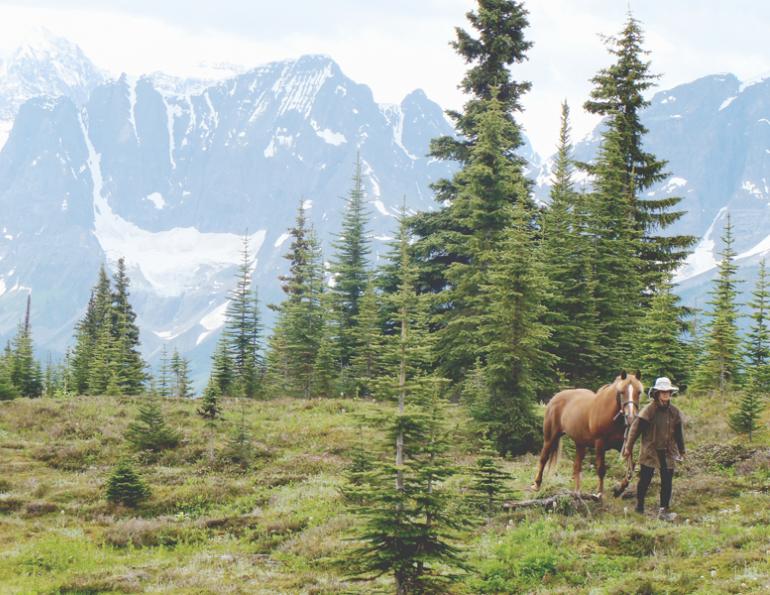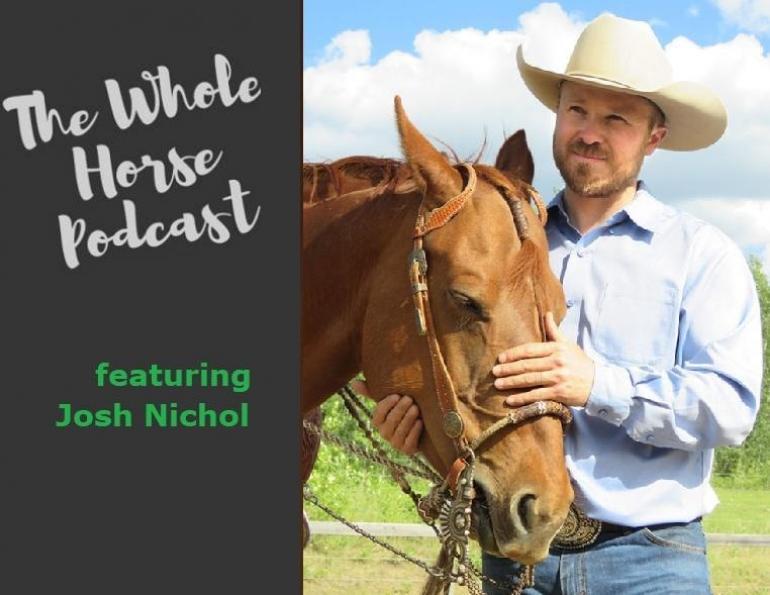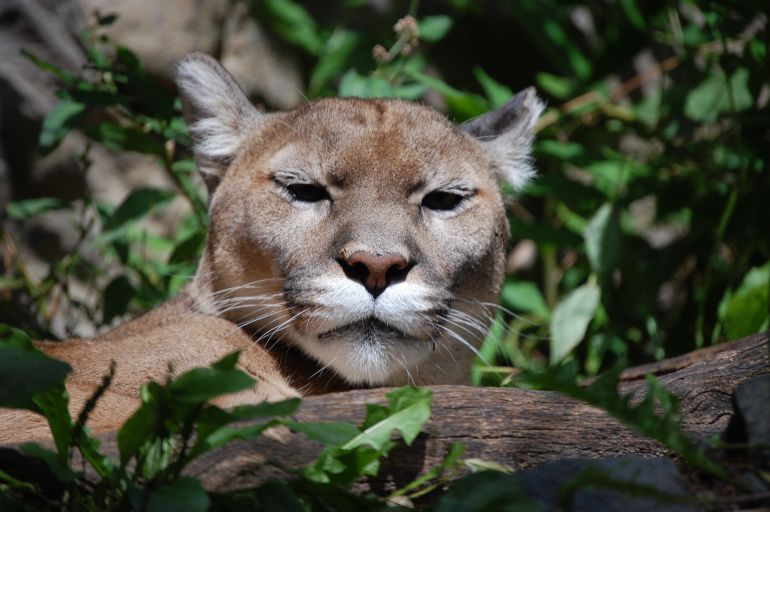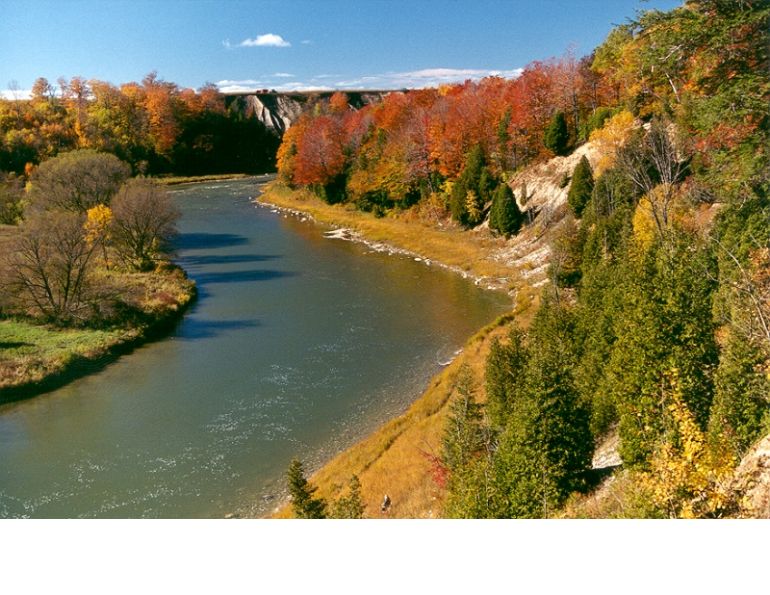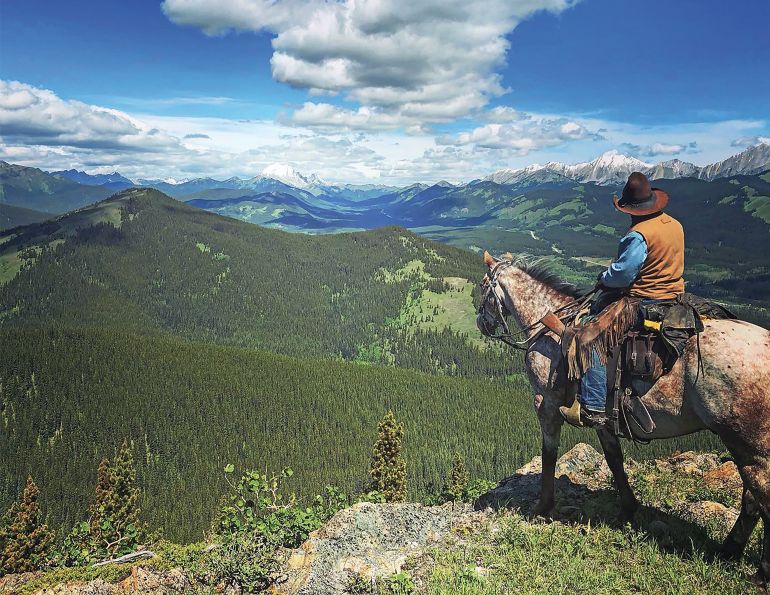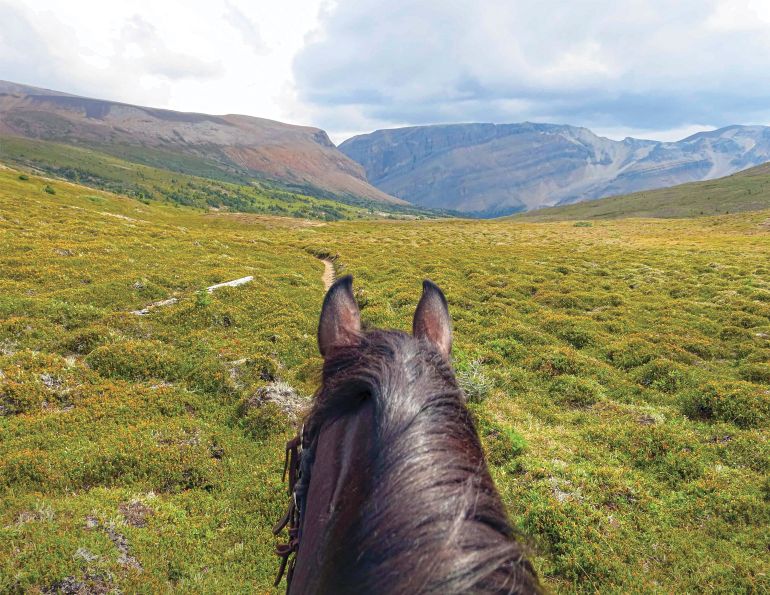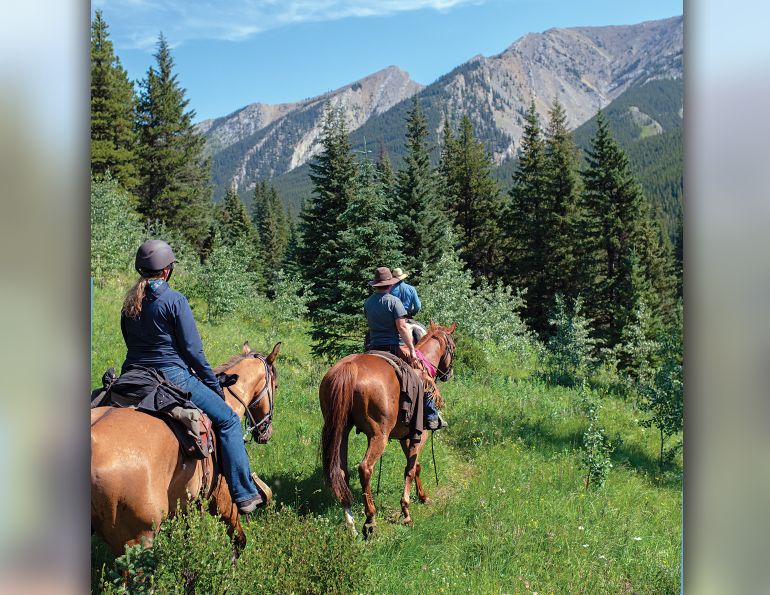By Tania Millen
I learned to pack in 2010 at Blue Creek Outfitting in McBride, BC, (see “From Yearning to Learning and Beyond” in the April 2011 issue of Canadian Horse Journal). With a background in both the horse industry and wilderness activities, I discovered that pack trips nicely combine the fun of horsing around with a love of wilderness. I took advantage of being unemployed in the summer of 2011 and rode over 500 kilometres over the course of four different pack trips, one of which was a ten day solo trip.
On the first pack trip of the summer, three of us rode for nine days through some great mountain country in Willmore, dodging rain and snow storms. Swollen rivers on the way out caused some concern, and one horse and rider combination went for an unintentional swim! The trip definitely provided some useful lessons.
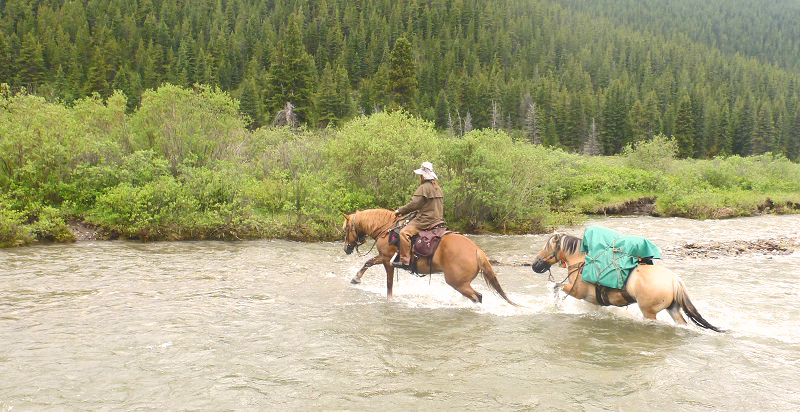
The author crossing a swollen river on the Willmore trip. Photo: Dale Russell
On the second trip, two of us headed for Twintree Lake, in northern JNP, on an eight day out-and-return trip. The mountains were spectacular, grazing was good, the weather cooperated, and my five-year-old horse went well on his first outing. It was a wonderful trip.
Chomping at the bit for more adventures, the mystique of the well-named Hardscrabble Pass captured my attention and became the focus of my third pack trip. With one section of steep, slick limestone and several areas of slab-shaped pancake rocks split by large fissures which yank shoes off unsuspecting horses, the pass is indeed a “hardscrabble.” Situated at 7200 feet, between Jasper National Park (JNP) and Willmore Wilderness Park in Alberta’s Rockies, the pass is quite remote and only a few travellers traverse it each year.

The author prepares to hit the trail solo with her trusty lead horse, Molly, a pack horse, and Jimmy-dog (not shown). Photo: James Potter
Having run out of travelling partners, I headed off on a ten day solo loop ride from Rock Lake, just east of the Willmore and JNP boundaries. From this well used staging area, I rode out on my trusty lead horse, Molly, with a pack horse from Blue Creek Outfitting, and faithful Jimmy-dog. We started up the Mountain Trail, which goes over Eaglesnest Pass and through a low pass at what is known as Mile 58. The Mile 58 or Summit Cabin has sheltered many travelers over the years, including the author on this trip. Beyond the cabin we went over a ridge into the West Sulphur River Valley.
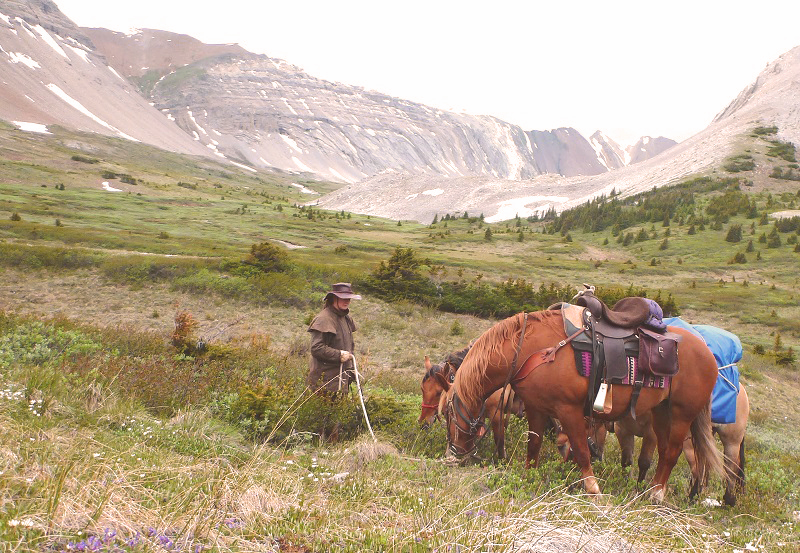
One of the main concerns on pack trips is ensuring that the horses get enough grazing. Photo: Dale Russell
One of the main concerns on pack trips is ensuring that the horses get enough groceries. Grazing at our second camp proved challenging, hence I spent many hours hand grazing the horses while thinking about Hardscabble Pass. The pass certainly has a reputation, and the precious tidbits of advice that I’d acquired included: the route is difficult; don’t go over the pass in wet, slick, or frosty weather; follow the cairns; and don’t be intimidated by the fissured slabs of rock. Horses have traversed this pass for almost a century, so I knew it was doable, but the advice was disconcerting.
With reasonable skies the next morning, we headed up the West Sulphur Valley to the pass. Surprisingly, the trail was quite obvious, passing through open meadows then into a bowl where waterfalls flowed off headwalls and rocky bits pointed at the sky. The views were stellar.
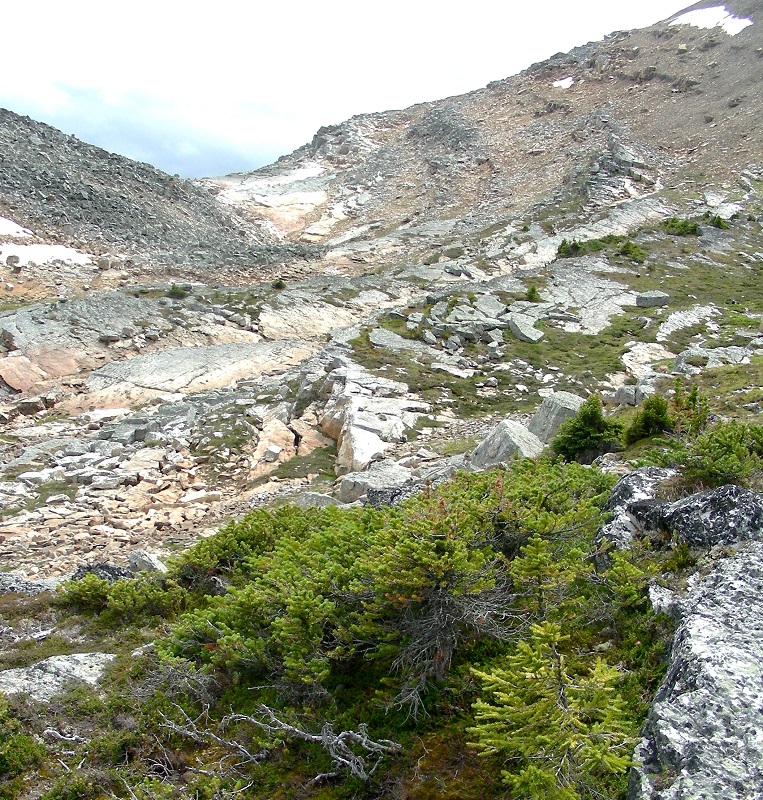
Hardscrabble Pass is well named, with terrain ranging from steep, slick limestone, to fissure-ridden giant rock slabs. Photo: James Potter
As the horses and I huffed and puffed up to the pass, I wondered when it was going to get hard and what “hard” entailed. We soon found out. The trail wound through large rocks, over small rocky drops, through slabs of rock which appeared to have been split by a giant’s hammer, and across slick rock peppered with a variety of rusty shoes from other, less fortunate horses. At one point even reliable Molly balked. I think she was shocked by the fancy footwork required.
Having survived what was surely a test of horse character and surefootedness, we hustled up to a large cairn at the top of the pass. The view was stunning, but the day was far from over. What goes up must go down, and we had to pick our way down to the lake far below, through rocky outcrops and a band of trees, without an obvious trail. Not a huge undertaking, but a bit intimidating all the same. I didn’t want to get it wrong and end up on top of a cliff. But away we went: down, down, and down some more. I probably didn’t take the best route, but we made it nonetheless.
The trail across the meadows of Blue Creek Valley is sketchy and difficult to follow. After losing the trail for the umpteenth time, I informed three startled moose that they needed to work on their trail building. Too tired to continue, we poached a hiker campsite that night. The horses enjoyed grass that hadn’t been grazed in many years, while I enjoyed not having to monitor them too closely. The next day we moved to Natural Arch Camp for great grazing and fabulous views. It’s a really special place.
Over the next two days we travelled three sides of a square. I’d been unable to gather information about a very steep trail over a pass into the next valley, so decided that the long route was a wiser choice. Arriving at Little Heaven Camp (named for the exceptional grazing), we were at a crossroads. We could go east to Rock Lake or north over another pass and extend the trip. I was keen to go north; however, it would be the third long day in a row, so I deferred the decision until morning.
The next day dawned sunny, so we headed north for a long, hot, tiring day through wither-high willow in prime grizzly country, over a pass, and down a riverbed. We travelled over 80 kilometres in three days, with significant elevation losses and gains, and were pretty fried by the time we arrived at Brewster’s Wall. Fortunately, the scenery was spectacular; unfortunately, the grazing was poor. But the next morning I found a pocket of knee-high grass for the horses’ well deserved rest day. Happiness is good grazing for your tired horses.
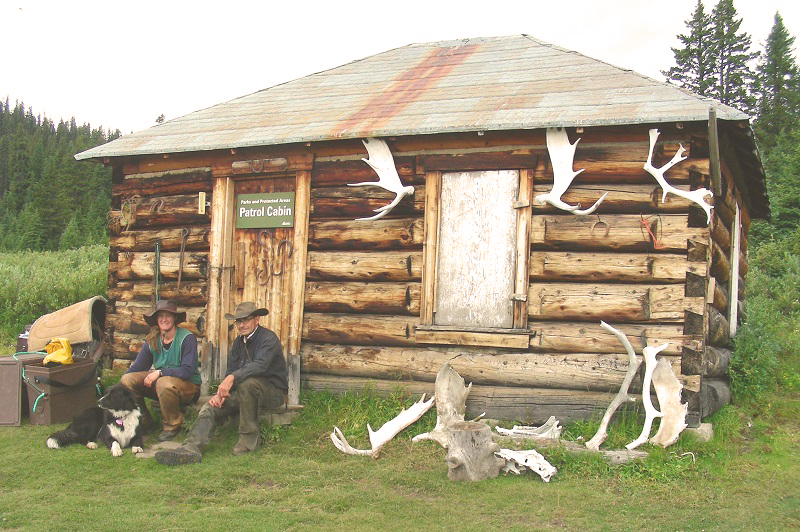
The Mile 58 Cabin was built in 1929 and has offered shelter to many a traveler over the years. Photo: James Potter
The last two days of the trip were just plain fun. No new scenery, simply the privilege of travelling through magnificent country. On the last night of the trip, we camped at Mile 58 cabin and I felt very connected to the history of the Willmore. The cabin was built in 1929 and the walls told stories of those who had stayed there and what they endured. That night the Willmore displayed its wildness. A storm blew in, cold and very wet. While the horses shivered under the trees, Jimmy-dog and I holed up in the cabin, thankful for the pioneers who had built the sturdy walls that kept us dry. It was a fitting last night for the trip.
The last day entailed a long walk back to Rock Lake, providing ample time to muse about solo journeys. I thought about how going solo forces the traveler to meet every single one of the many challenges encountered head on; how it’s just you and your skills, whatever they may be, against these challenges; and how solving whatever problems that arise builds tremendous confidence. I also decided that time spent alone helps re-focus our thoughts on the things that really matter - food, water, and shelter – and away from the distracting electronic gadgets and stresses that can overwhelm in modern-day life. Overall, I found the solo experience enjoyable and would highly recommend it, although there were certainly some testing and stressful times.

Although the thought of riding alone out into the wilderness can be daunting, most of us are more capable than we believe. Photo: Dale Russell
After the rigors of the solo trip, the fourth and final trip of the summer was straightforward and fun. In mid-September a friend and I rode a six day loop around Mount Assiniboine Provincial Park. Driving an active mining road to the trailhead wasn’t fun, but having survived that and two snow storms, we enjoyed aging cabins, awesome grazing at Police Meadows, and expansive views of Mount Assiniboine. It was a great way to end a very special summer!
For those who enjoy horses, wilderness travel, or both, pack trips are an ideal way to get into remote country that you are unlikely to experience otherwise. While intimidating, I found that going solo was not as difficult as I had expected and was really very satisfying. I hope more riders feel inspired to venture out and enjoy the wilderness with their horses. Most of us – and our horses! – are more capable than we believe.
Main photo: Naomi Gourley - The Albertan Rocky Mountains offer a stunning backdrop against which to ride.



